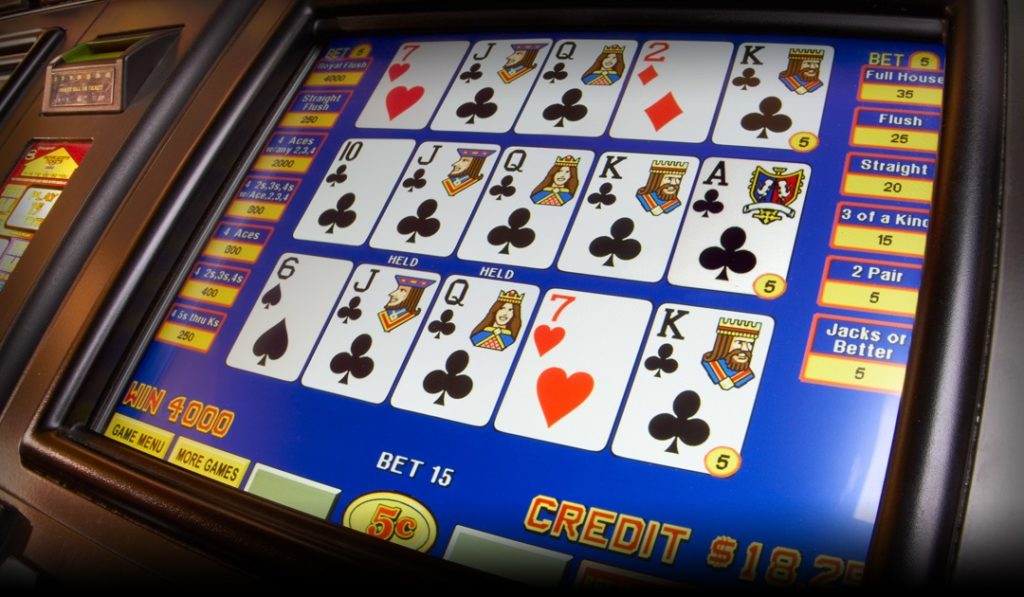
Loot crates, virtual currency and a very blurry legal line
The ESRB’s recent decision to introduce “in-game purchases” labels on products in response to the heat received by companies like EA for Battlefront 2 and Blizzard for Overwatch concerning loot boxes poses a not so novel question to game developers and publishers. When do game mechanic step past legal gaming and enter the domain of illegal gambling?
While this is getting plenty of media attention now, it’s an analysis I’ve run dozens of times in my 8+ years representing both publishers and developers as a video game attorney. In each case my response is never as clear cut as our clients would like, because gambling law isn’t as clear cut as anyone would like. Frankly, it’s a mess of legal pluralism that doesn’t operate well in a global, online economy.
This is evidenced in the recent responses from various countries—Belgium determined that the Battlefront 2 loot boxes constitute illegal gambling, whereas the UK determined otherwise. In the US it’s even more complicated, because each state defines “gambling” differently. Hawaii’s representatives have indicated that under Hawaii law the crate system is gambling, but many states may reach a different conclusion.
So there is very little uniformity in gambling law, and it provides a good example of the problems presented by legal pluralism in the international marketplace. Have you ever entered an online contest or sweepstakes and noticed the confusing list of excluded states and territories? This is why.
But there are common factors that we can examine to set a base line for this analysis. Gambling generally requires satisfaction of three elements:
- Consideration
- Chance
- A prize
The problem arises when we seek to define these three elements, as each jurisdiction offers a slightly (or very) different variation. Some territories define “consideration” broadly to include anything from a peppercorn to play time, while others require a cash or cash-equivalent transaction. Some define the “chance” element vaguely (i.e., “all games of chance”), while others specify game types that constitute illegal gambling (craps, poker, roulette, game or race betting, etc.). The same problem arises with the definition of “prize”—does it require intrinsic cash value, or is anything with intrinsic value to the player sufficient?
How gambling is regulated also varies from territory to territory, country to country, and state to state. Some states and countries license particular operators and collect taxes based on revenue from gambling enterprises (i.e., Nevada), while others only allow for state lotteries.
Now let’s look at video games generally. Any game, under the vaguest, broadest definition of gambling, could arguably meet all three factors. You pay for a game, which invariably includes some element of chance, and you frequently receive loot or some other reward in game when you play.
And while this obviously isn’t the first time the question has come up for developers or publishers, it’s not something my clients routinely spend a lot of time or money worrying about. This is because gambling regulation generally concerns cash-value transactions specifically tied to games of chance.
So why are video games okay, generally? Games may require a certain degree of skill, which can offset the “chance” element of the gambling equation to varying degrees. The money paid for the game is the cash value of the game itself, not the loot you might receive while playing. And the loot itself rarely has any real monetary value, nor can loot be exchanged for cash unless a secondary market becomes available.
But when we introduce virtual currency, microtransactions and secondary markets, things get weird.
Virtual Currency and Gambling
There are lots of virtual currencies out there, from in game money to bitcoin, but they can generally be broken down into two forms for purposes of regulation analysis: convertible and non-convertible. Convertible virtual currency has a cash/currency equivalent value and can be exchanged for the same. Non-convertible virtual currency has no cash equivalent and cannot be exchanged on a primary market (e.g., through the party offering the virtual currency).
Most if not all regulation concerning virtual currency, so far, only addresses convertible virtual currency. If you pay money for in-game cash, but that currency cannot be refunded or redeemed for anything of direct cash value, chances are most regulation will not address it. It’s even less likely to face regulation if you receive virtual currency in a game like PlayerUnknown Battlegrounds, where points are awarded based on how well you or your team performs.
So why is a cash or real currency transaction so important to the question of illegal gambling? If you look at the legislative history of gambling regulation (or the preambles of specific laws), you’ll notice that the purpose behind these laws tend to share a common theme with regard to exploitation and organized time. Historically, gambling has been closely tied to money laundering practices—so real cash transactions are, to a considerable extent, fundamental to the question of whether certain forms of games qualify as illegal gambling operations.
The problem arises, then, when virtual currency can be exchanged for something of cash value—and where this problem becomes even trickier is if that cash value is achieved through a secondary market. The more steps you add between obtaining virtual currency and exchanging it for something with a cash-value equivalent, the harder it is to determine whether regulation should apply.
Developers and publishers don’t really have control over secondary markets. If you purchase in-game goods with virtual currency, chances are there is no cash equivalent value from your direct point of sale, e.g. the developer or publisher. However, if a secondary market exists among players, suddenly real money becomes involved, and we raise the specter of regulation.
But should the developers and publishers be held responsible for secondary markets beyond their control? Likely they would argue no, especially in the case where virtual currency isn’t purchased with real currency… but as we’ve seen with Battlefront 2 and Overwatch, consumer and regulator opinions on that may differ.
Loot Crates and Microtransactions
Another mechanic that requires examination is the direct example presented by EA and Blizzard. Purchasing virtual items like loot boxes with real money is nothing new. It’s been a time-honored tradition since Japanese gacha and kompu gacha hit the scene. Many Asian mobile and MMO games have used microtransactions for years to tremendous popular growth and affect—but not without consequences. Back in 2012, both DeNA and GREE were heavily criticized for using the “kompu gacha” in their titles.
So what is gacha(pon) or kompu gacha? Let’s say you walk into a grocery store. Look to your immediate right or left, and you will likely find a series of one-legged boxes filled with round, transparent containers holding toys, stickers, etc. You put a quarter in, twist the knob, and a container drops out.
You open it up, but it’s not the prize you want. In a traditional gachapon game, multiple versions of the prize you want will be randomly dispersed in the box. In the kompu gacha version, only one version of the prize you want is in the box, and it’s all the way at the top of the container pile. You will have to purchase every or nearly every container in the box if you want your prize.
It’s a bit like a skinner box, except you’re using money instead of labor. The kompu gacha version was viewed by the Japanese consumer agency office as exploitative, and both DeNA and GREE entered agreements to limit in-game transactions by children. But we’ve seen this come back more recently, with games like Granblue Fantasy. One player spent over $6,000 in one night just last year for a rare character.
Clearly there are problems with kompu gacha, but traditional “gacha” is more of a grey area. In the physical, grocery store version we’re all familiar with, each prize is generally seen as sharing the same monetary value, or 25 cents. Even if one item is more rare than the others, the cost of production + profit margin for each item is the same for the person responsible for the box game. This is similar to the loot crate system in a game like PUBG—Bluehole’s direct profit margin isn’t likely to increase even if a secondary market appears, because there’s no point of sale transaction for the currency received or the loot crate.
But what happens when a secondary market appears, as is often the case in video games with a microtransaction/loot crate mechanic? This goes directly back to the problem presented above, when I discussed virtual currency. A secondary market may drastically increase the value of a particular item—but in the microtransaction context, that increase in market value directly drives up the profit margin of the publisher or developer of the game, as players spend more real money on virtual currency/loot crates to obtain the rare.
So once again, the problem of whether a secondary market is the responsibility of the developer/publisher comes into play. However, now the creator is benefiting from that secondary market, and will thus fall under greater public scrutiny. A developer might argue that microtransactions are a direct point of sale transaction and all prizes have the same value, but when the value is altered by a secondary market to the developer’s benefit, we create the possibility of unlawful gambling. Suddenly the condition of “chance” at a rare prize makes paying more money to get that item attractive.
Conclusion
It is probably fair to say that all loot crate systems, as we see in Battlefront 2, PUBG, and Overwatch, constitute some form of gambling. However, it’s also fair to say that not all systems constitute illegalgambling unless it becomes exploitative as a result of a secondary market. Whether a particular territory will decide whether the practice is exploitative is up to the regulator. The ESRB’s approach seems like a workable compromise to self-regulate the matter for now, but we will likely continue to see political movement on this issue moving forward.
The take away from all of this is that the line between gambling and gaming, from a pure legal analysis standpoint, is rather hazy. However, from a public policy standpoint, gambling regulation will only willingly enter the domain of video games if practices are clearly exploitative and involve real cash transactions. This ties into the purpose of gambling regulation, which is originally intended to reduce methods of money laundering and exploitative practices in organized crime.




0 Comments